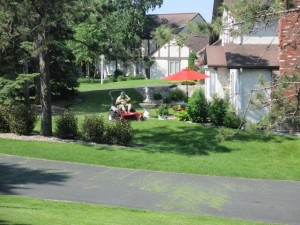How healthy is the turf grass on your property? Even if your turf looks healthy, it might not be getting all the nutrients needed from the soil due to pH imbalances. Soil texture, water, sun light intensity and duration, fertilizer applications, and time are just a few of the many factors that can change the makeup of soil pH. I’m going to focus on soil texture and fertilizer applications for this purpose.

An ideal pH balance in the soil is between 6 and 7.5. This is where most nutrients are available for plant intake including many of the micronutrients that are often overlooked. A proper soil test can determine the pH, soil texture, and nutrient availability. Soil texture is a percentage of sand, silt, and clay in your soil. Each one of these soil types has different properties that affect what is actually in your soil. CEC (Cation Exchange Capacity) is what we measure for nutrient availability in different soil types. CEC varies greatly between sand and clay particles. A sandy soil is likely to leach nutrients and water very fast resulting in a very slow rise in soil pH. As you can imagine, a heavy clay soil is the opposite from sand. Typically a steady rise in pH is due to sulfur retention and build-up from fertilizer and little water leaching if any.
Fertilizers can be used in many different forms (i.e. liquid, powder, granular). The most commonly used fertilizer form is granular due to its safety for the applicator, relative safety for the environment, and general ease of a uniform application. These granules often have a sulfur coating around the outside of the granule. As the granule gets watered and starts breaking down, the sulfur is released into the soil. The result is a rise in pH over time. Granted, sulfur is a micronutrient that plants use, but the usage is so little that the sulfur is either bound to the soil particles, slowly raising the pH, or it gets leached out.

A soil test is administered through a soil probe provided by John Deere Landscapes. The soil is placed in a bag and mailed off to The University of Minnesota for testing. When testing is completed, the results will be mailed back to Barrett Lawn Care where a full analysis can be done and we can determine the appropriate solution for your particular lawn needs.
If a soil test is administered and the results show a pH change is needed, Barrett Lawn Care can correct this issue for you. Lime is applied to turf to lower pH and sulfur is applied in the rare instance that your lawn is actually alkaline and needs to be raised. With a proper pH range in the soil, you can be rest assured that the soil under your turf is providing the best medium for growing a lush, healthy lawn.


